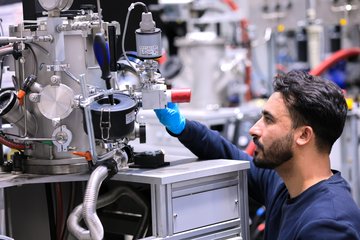All genres
1.
Journal Article
Obstacle strength of binary junction due to dislocation dipole formation: An in-situ transmission electron microscopy study. Journal of Nuclear Materials 465, pp. 648 - 652 (2015)
2.
Journal Article
Atomistic simulation of the a0 <1 0 0> binary junction formation and its unzipping in body-centered cubic iron. Acta Materialia 64, pp. 24 - 32 (2014)
3.
Journal Article
Molecular dynamics study of strengthening by nanometric void and Cr alloying in Fe. Journal of Nuclear Materials 442 (1-3 Suppl.1), pp. S643 - S648 (2013)
4.
Talk
Atomistic study of dislocation mobility and obstacle hardening in bcc-Fe: versatility of embedded atom method potentials. MMM2014, 7th International Conference on Multiscale Materials Modeling
, Berkeley, CA, USA (2014)
5.
Talk
Recent development of modelling techniques in nano- and meso-scale simulations of dislocation dynamics. Workshop on Integrated Computational Materials Engineering (ICME), Rolduc Abbey, The Netherlands (2014)











